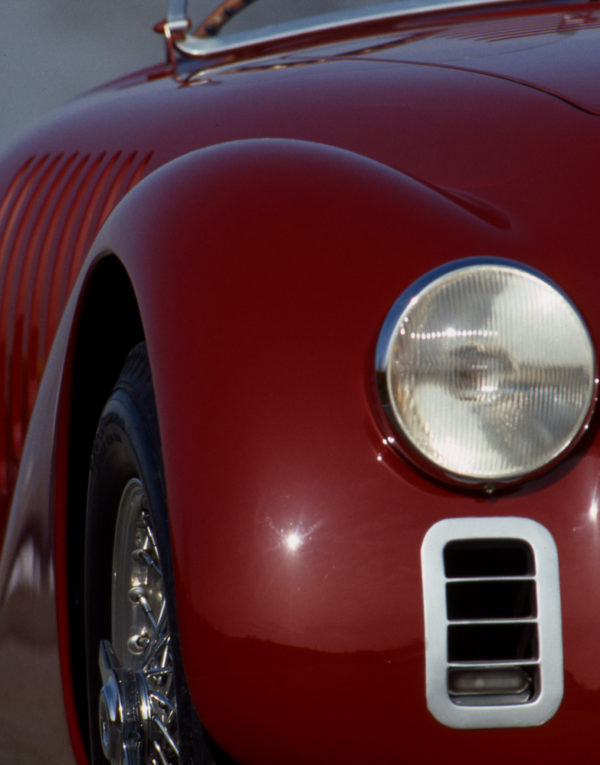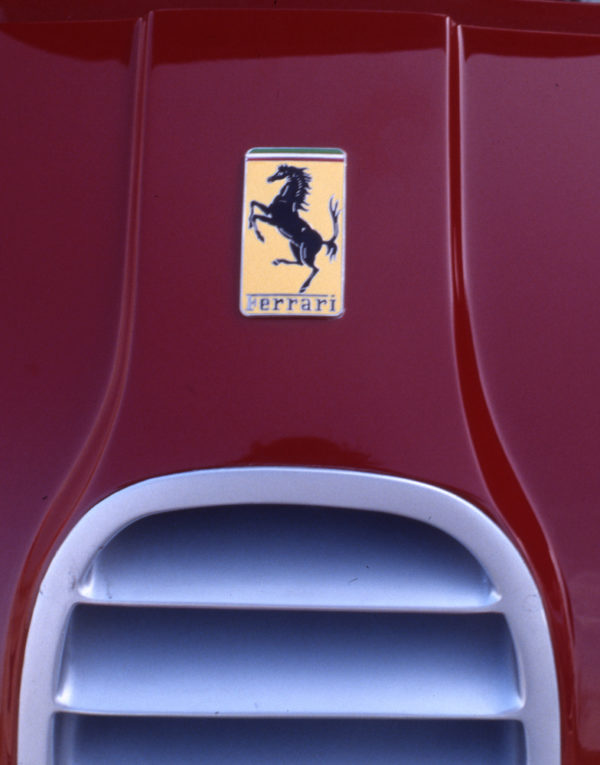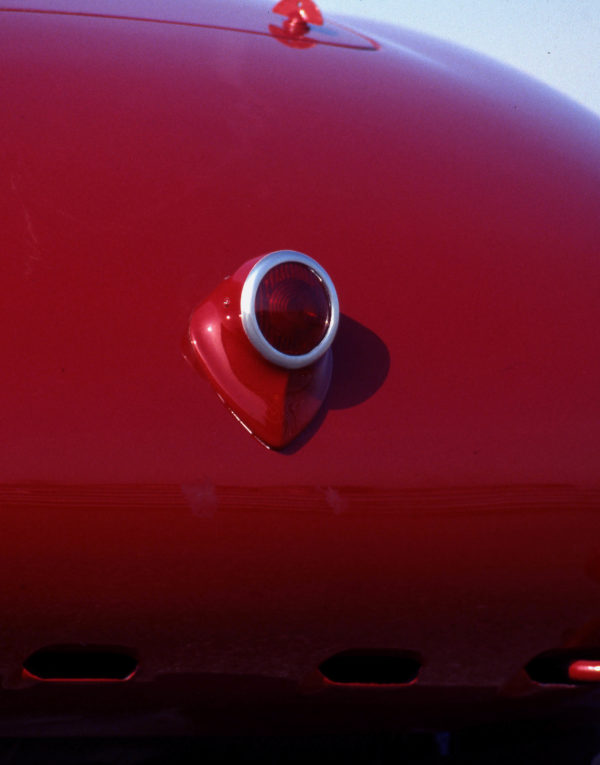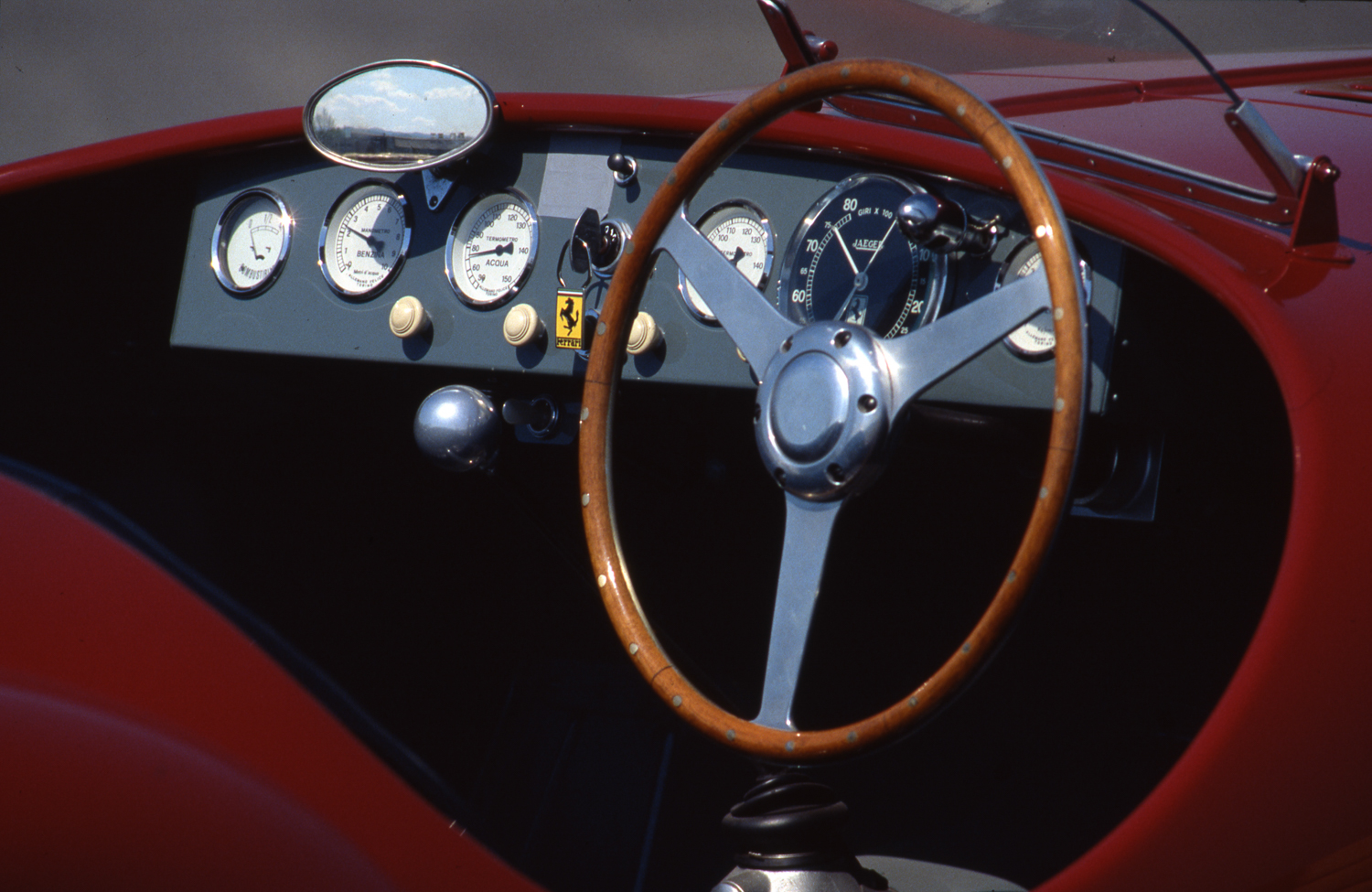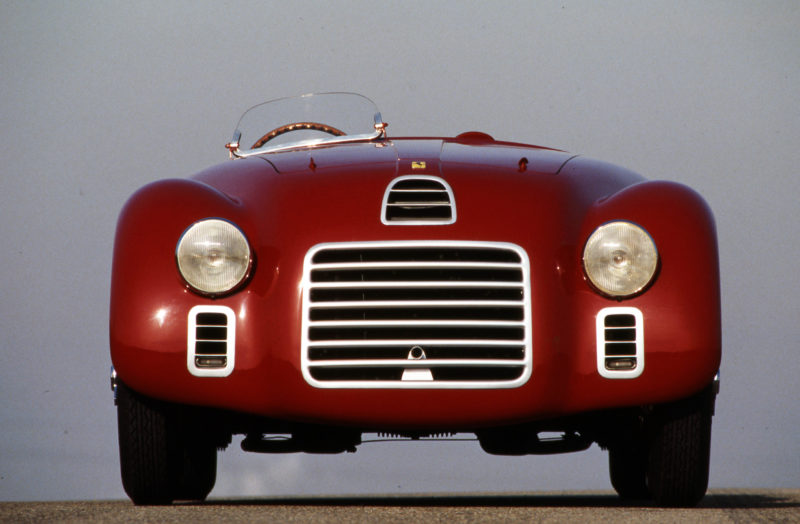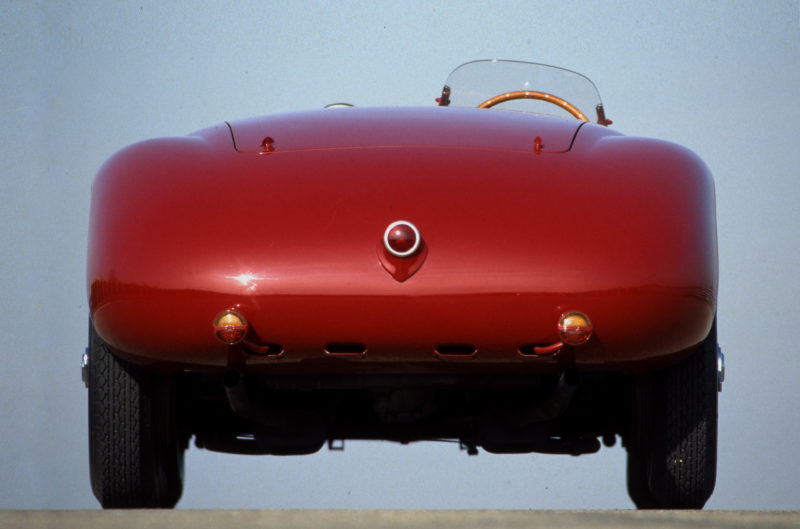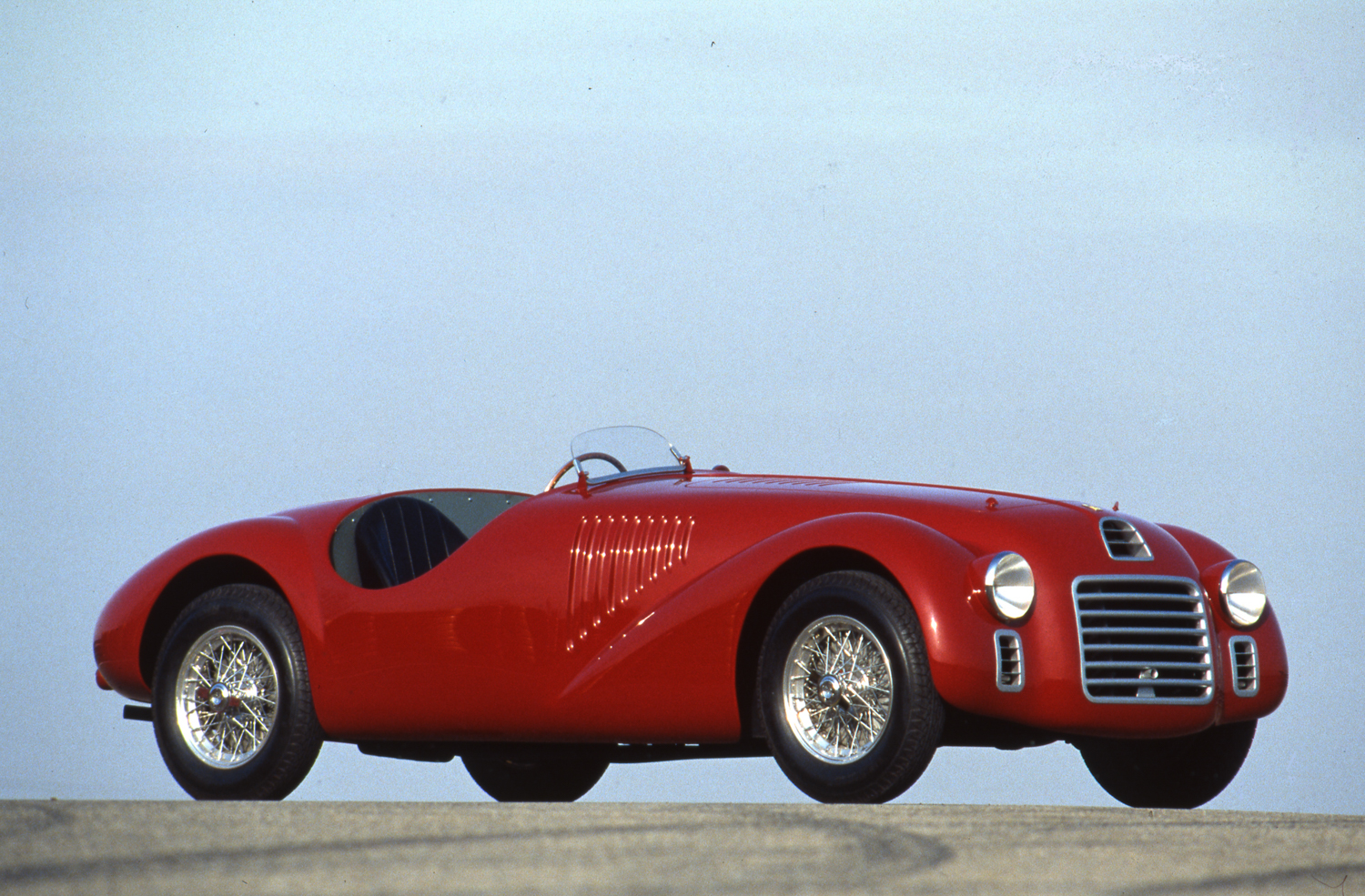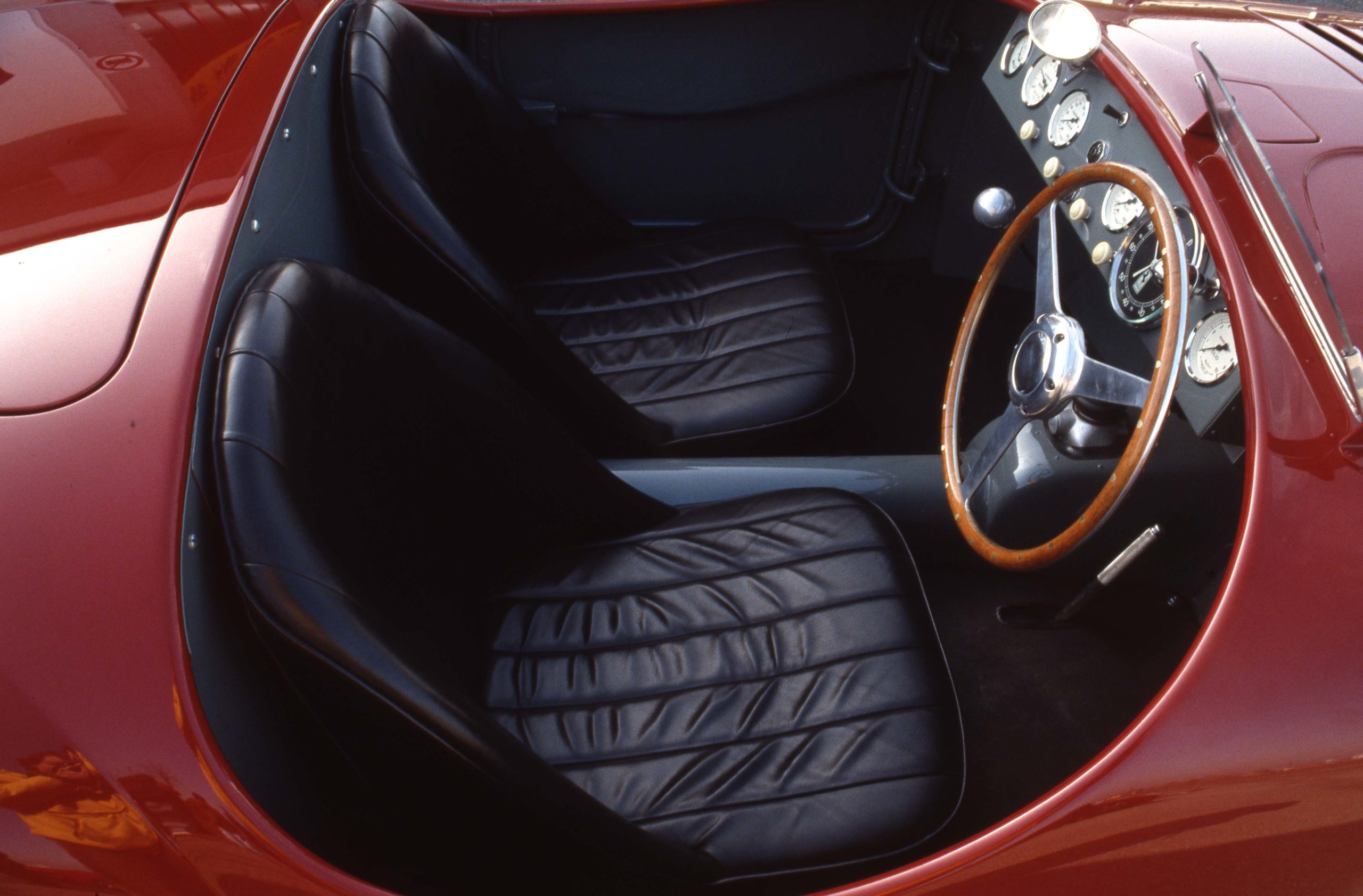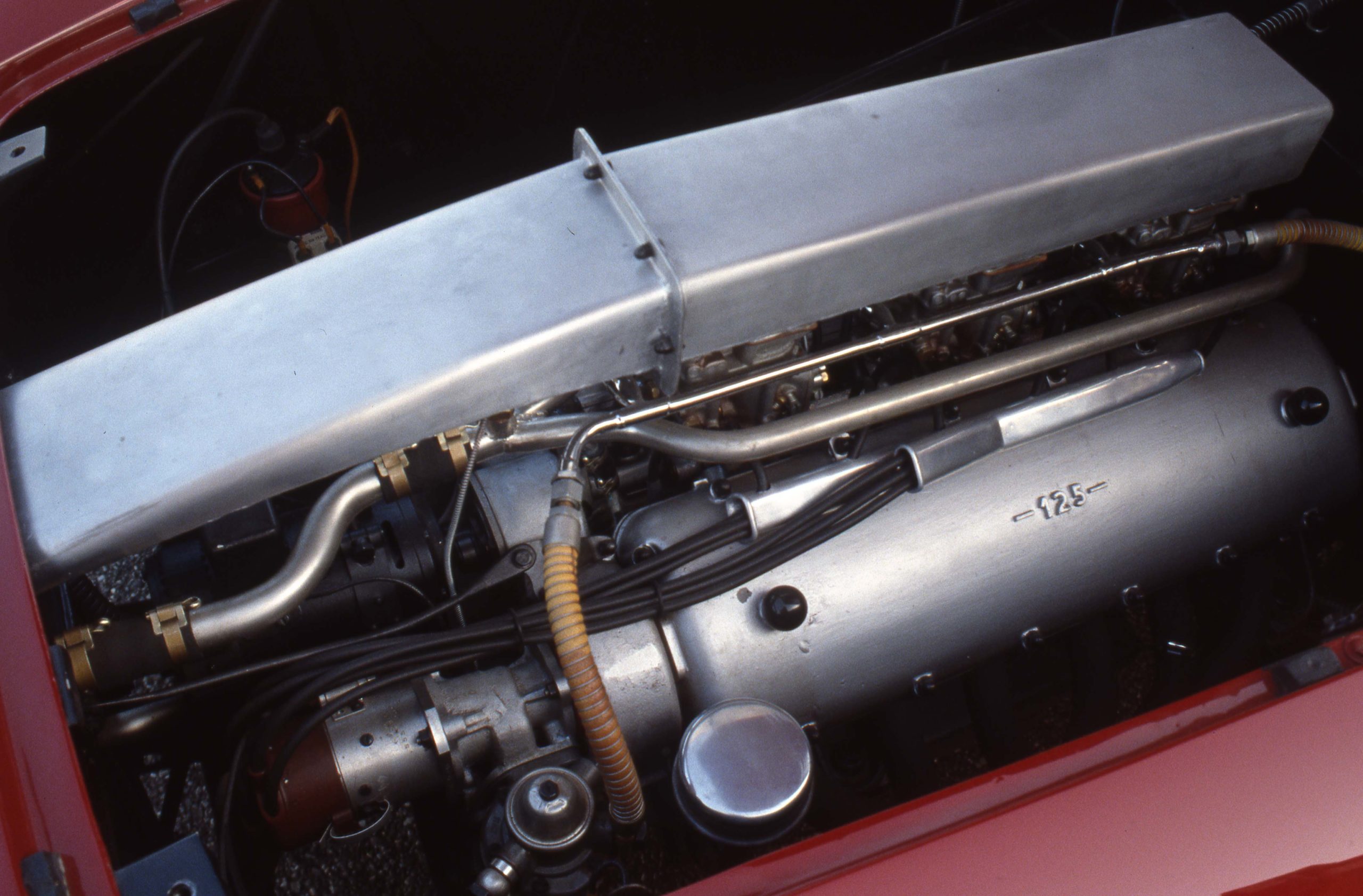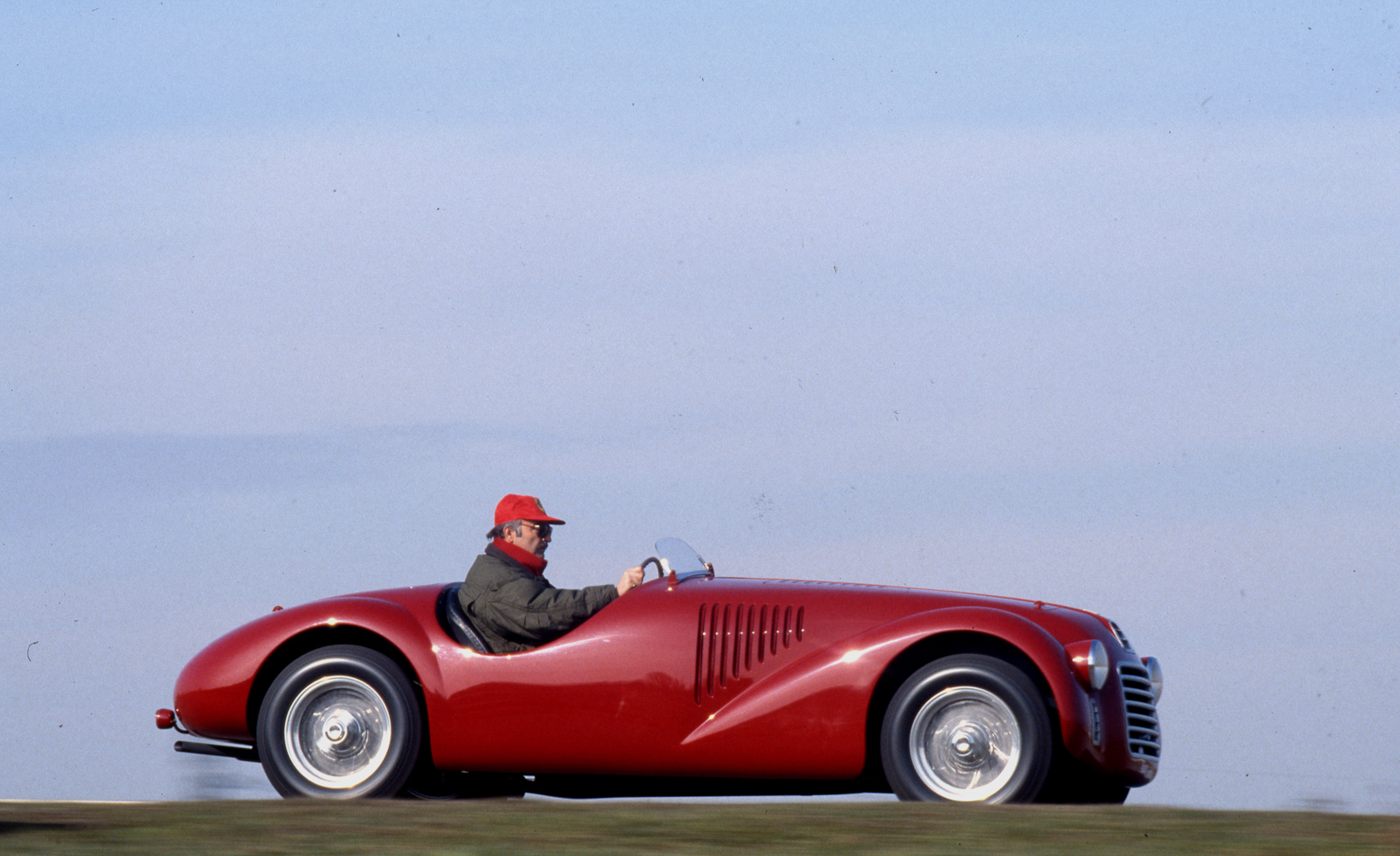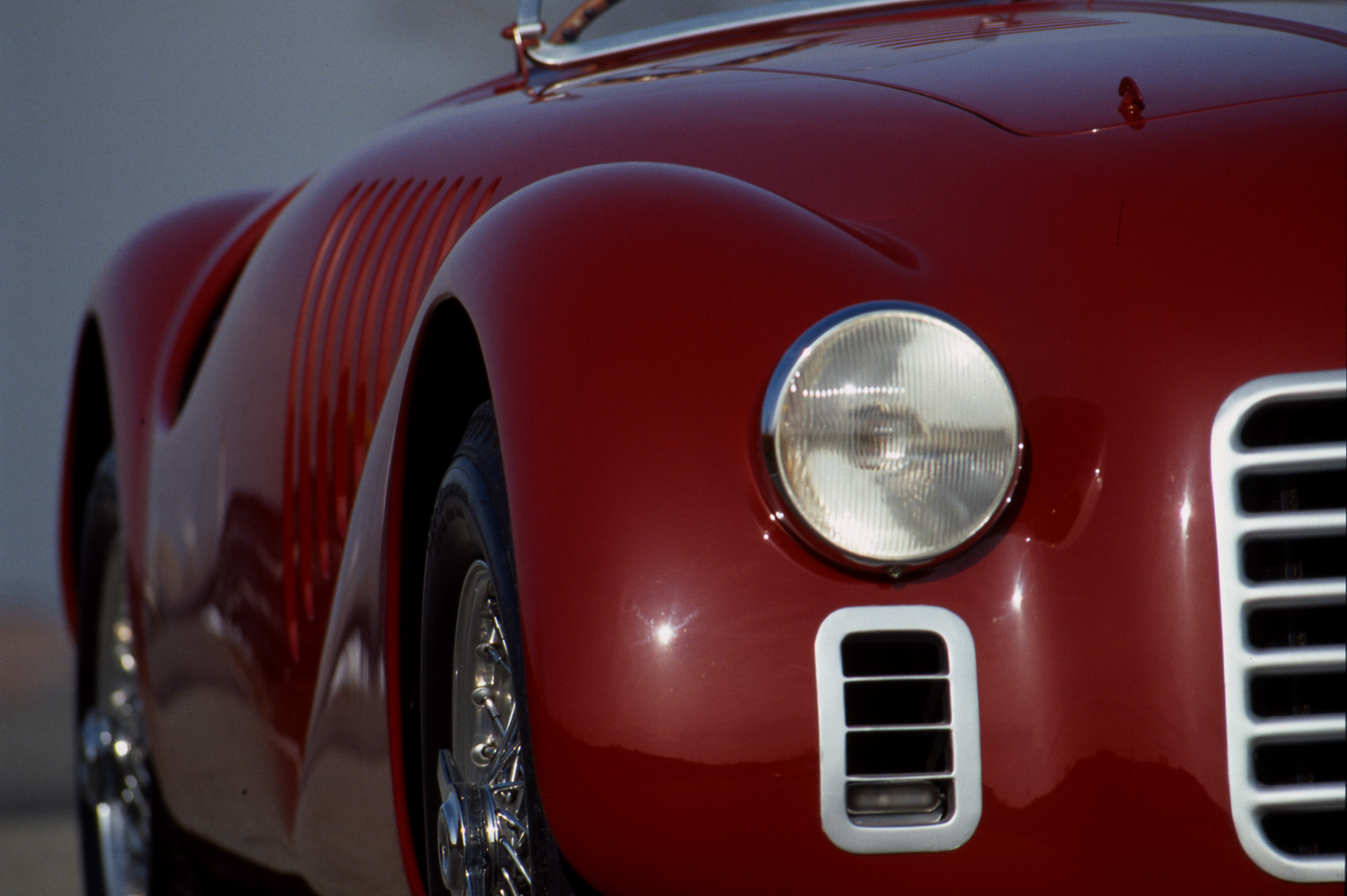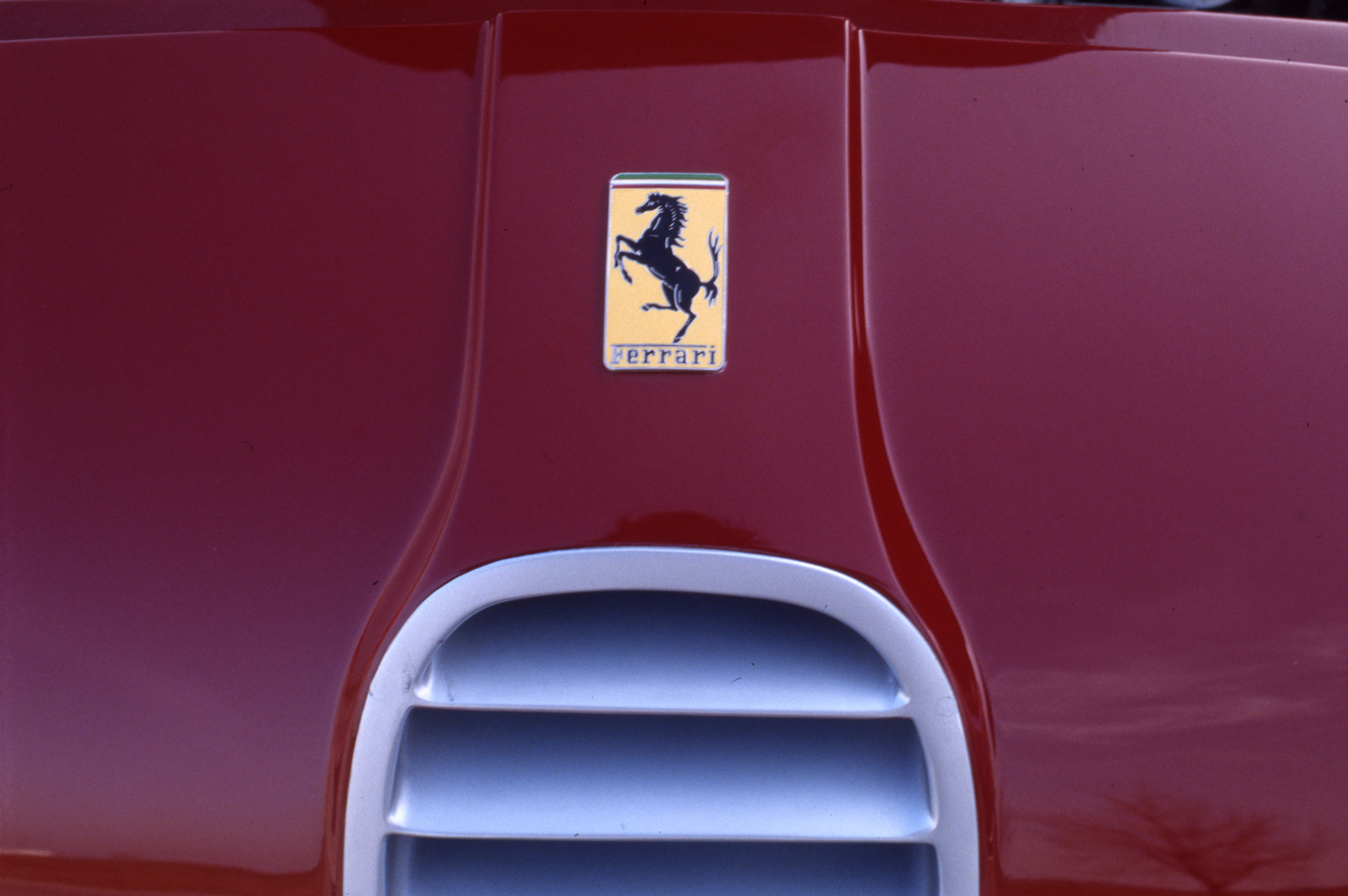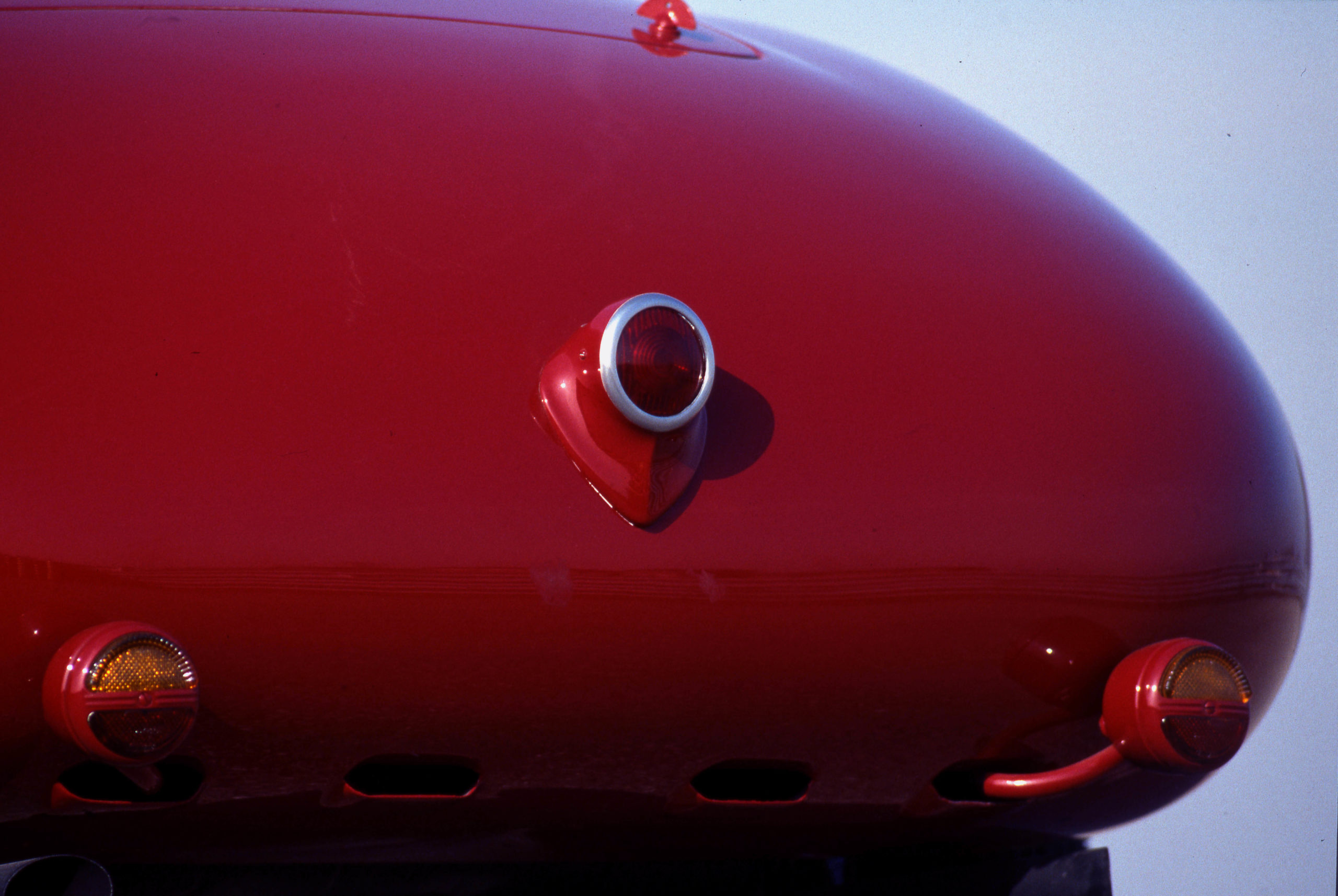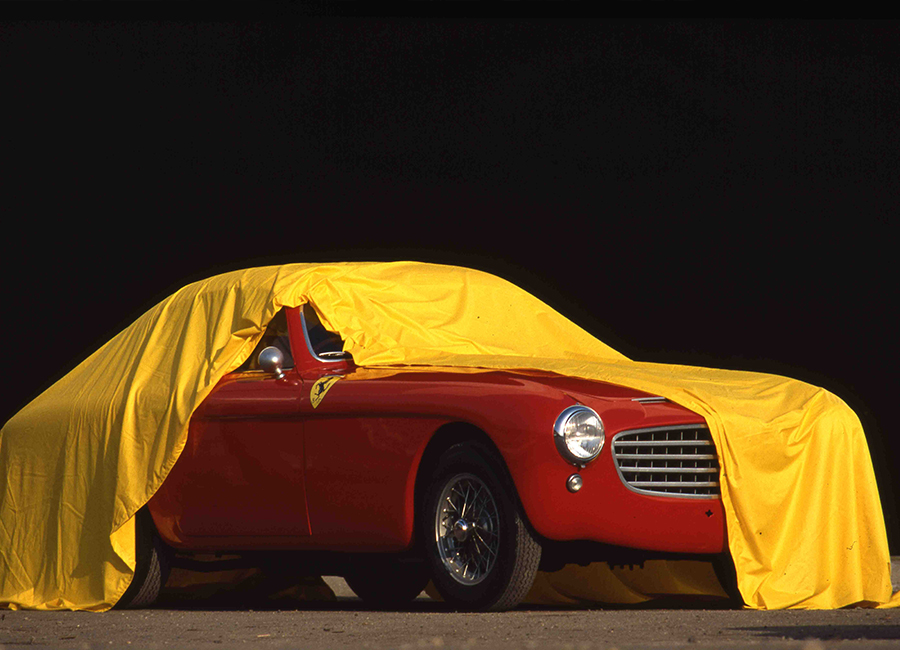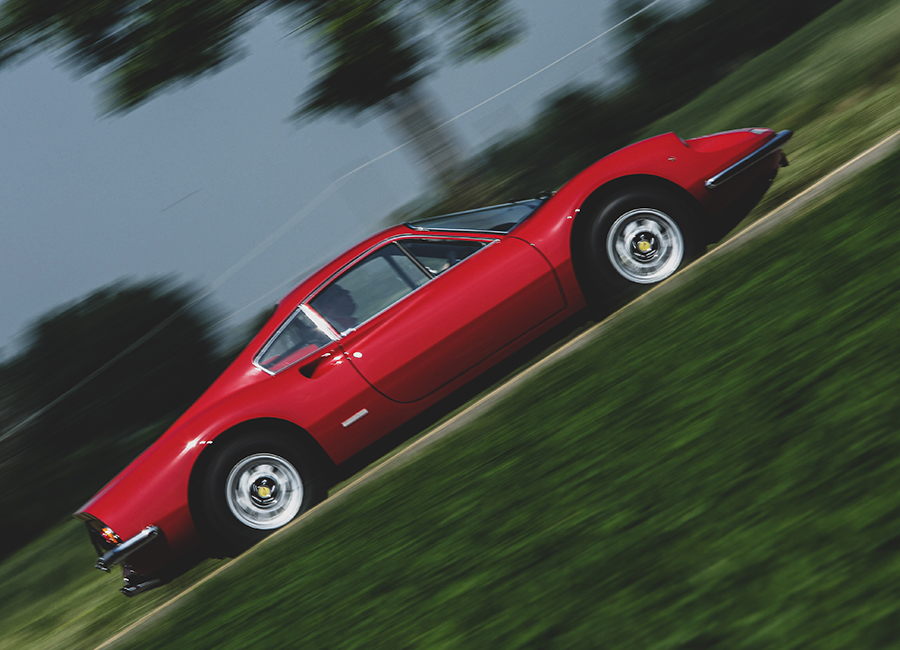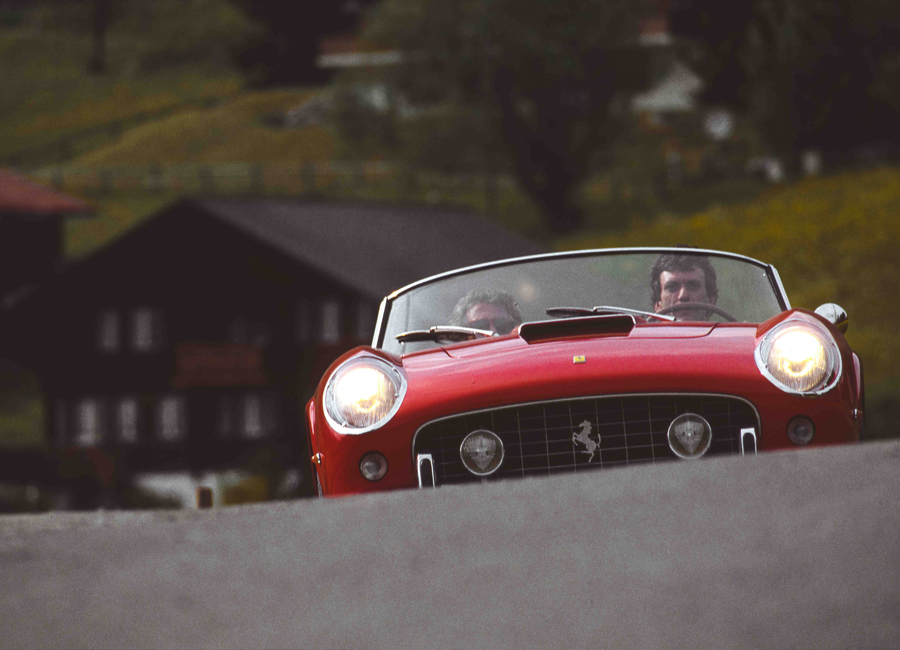THE FIRST FERRARI
The first car built by Enzo Ferrari having the yellow badge representing the Prancing Horse, symbol given as a gift by the mother of Francesco Baracca, flying pilot from the Second World War. After four years in which Ferrari couldn’t use his name for creating an Automotive Company due to the restriction imposed by the drag with Alfa Romeo, a Wednesday afternoon in 1947 (it was the 12th March) a suit and tie man crossed the gates of Via dell’Abetone Inferiore in Maranello at the wheel of a naked chassis which revealed a V12 engine.
At that time, Italy was a country that needed to lift up from War wounds and a twelve-cylinder engine in the post-war period was like something from another planet.
The Ferrari story had begun. At that time, Italy was a country that needed to lift up from War wounds and a twelve-cylinder engine in the post-war period was like something from the other planet. That has been Ferrari’s bet, as himself reported on Caratteristiche Tecniche dei Motori Ferrari realizzati dal 1946 al 1985: “When I began, against everyone’s advice I wanted a 12-cylinder engine and that engine, which many people expected to put an end to my ambitions, is still recognizable in its numerous sons and grandsons. I have tried them all, eight-, six- and four-cylinder units, but I keep returning to the 12-cylinder, which remains my favourite.” Enzo Ferrari.
The project for the 125 engine has been entrusted to Gioacchino Colombo by Enzo Ferrari, who became the father of all V12 Ferrari engines identified as the Short Block. The specific request was to create an engine capable of supplying a high rotation speed and with adequate power to the sports characteristics that this Ferrari car should have had. Thanks to the help of Giuseppe Busso and Luigi Bazzi, Colombo satisfied the request of Enzo Ferrari, creating a unit of about 120hp (in 1947 were such a high power) at 6800 rpm on a weight of 650kg, able to tap the incredible speed of 200km/h.
Two cars were built in 1947: the 125S named Alaspessa (chassis #01C) and 125 Competizione chassis #02C, called Sigaro, and different from the first due to the open-wheels and fenders, which took derivation from the motorcycle. Raison d’ètre of Maranello enterprise has always been racing and, with its first sports car built, it marked the first striking of the hit clock. 125 was the first and the last Ferrari coloured in Rosso Corsa Alfa Romeo, then replaced with Rosso Corsa FIAT, today recognized as Rosso Ferrari. The debut of the “Barchetta” has been a “insuccesso promettente”, promising failure, as Ferrari told after the 11th May 1947 Piacenza race, in which Franco Cortese at the wheel of the 125S #01C was leading the race when a fuel pump failure forced him to withdraw.
Ferrari’s ideas regarding the use of this “Barchetta” are summarized into few lines of a presentation brochure of the car, which he himself wrote: “Before setting your program for future sporting activity, before buying a car for your needs, please remember the Scuderia Ferrari and write us. Thanks”. Reading these words today, they demonstrate how well-founded Ferrari’s ideas have turned out.
The first success has not waited for long, indeed two weeks later, the Piacenza race, 125 triumphed at Roma Grand Prix – Caracalla Circuit – and conquered other success during the season (6 race won of 13 competed). The first Ferrari 1-2 achieved, arrived on 13th July 1947 thanks to the victory of Tazio Nuvolari at the wheel of 125 Competizione (Sigaro) followed by Franco Cortese in the second position with the 125S (Alaspessa).
Both Alaspessa and Sigaro were dismantled at the end of the racing season to reuse the parts for setting up the upgraded version 159 and 166 – it was a time in which Ferrari has regard for the costs of the components. In 1987, for the 40th Anniversary Celebration of the Company, Michelotto Automobili was designated to build a replica of the 125S Alaspessa on drawings of the era, and fitting an original 125 engine remained in Ferrari stock. Today this 125S its the witness of the competition story beginning, shown proudly by Ferrari on their Museum in Maranello.
ENGINEROUTE
THE FIRST FERRARI
The first car built by Enzo Ferrari having the yellow badge representing the Prancing Horse, symbol given as a gift by the mother of Francesco Baracca, flying pilot from the Second World War. After four years in which Ferrari couldn’t use his name for creating an Automotive Company due to the restriction imposed by the drag with Alfa Romeo, a Wednesday afternoon in 1947 (it was the 12th March) a suit and tie man crossed the gates of Via dell’Abetone Inferiore in Maranello at the wheel of a naked chassis which revealed a V12 engine.
At that time, Italy was a country that needed to lift up from War wounds and a twelve-cylinder engine in the post-war period was like something from another planet.
The Ferrari story had begun. At that time, Italy was a country that needed to lift up from War wounds and a twelve-cylinder engine in the post-war period was like something from the other planet. That has been Ferrari’s bet, as himself reported on Caratteristiche Tecniche dei Motori Ferrari realizzati dal 1946 al 1985: “When I began, against everyone’s advice I wanted a 12-cylinder engine and that engine, which many people expected to put an end to my ambitions, is still recognizable in its numerous sons and grandsons. I have tried them all, eight-, six- and four-cylinder units, but I keep returning to the 12-cylinder, which remains my favourite.” Enzo Ferrari.
The project for the 125 engine has been entrusted to Gioacchino Colombo by Enzo Ferrari, who became the father of all V12 Ferrari engines identified as the Short Block. The specific request was to create an engine capable of supplying a high rotation speed and with adequate power to the sports characteristics that this Ferrari car should have had. Thanks to the help of Giuseppe Busso and Luigi Bazzi, Colombo satisfied the request of Enzo Ferrari, creating a unit of about 120hp (in 1947 were such a high power) at 6800 rpm on a weight of 650kg, able to tap the incredible speed of 200km/h.
Two cars were built in 1947: the 125S named Alaspessa (chassis #01C) and 125 Competizione chassis #02C, called Sigaro, and different from the first due to the open-wheels and fenders, which took derivation from the motorcycle. Raison d’ètre of Maranello enterprise has always been racing and, with its first sports car built, it marked the first striking of the hit clock. 125 was the first and the last Ferrari coloured in Rosso Corsa Alfa Romeo, then replaced with Rosso Corsa FIAT, today recognized as Rosso Ferrari. The debut of the “Barchetta” has been a “insuccesso promettente”, promising failure, as Ferrari told after the 11th May 1947 Piacenza race, in which Franco Cortese at the wheel of the 125S #01C was leading the race when a fuel pump failure forced him to withdraw.
Ferrari’s ideas regarding the use of this “Barchetta” are summarized into few lines of a presentation brochure of the car, which he himself wrote: “Before setting your program for future sporting activity, before buying a car for your needs, please remember the Scuderia Ferrari and write us. Thanks”. Reading these words today, they demonstrate how well-founded Ferrari’s ideas have turned out.
The first success has not waited for long, indeed two weeks later, the Piacenza race, 125 triumphed at Roma Grand Prix – Caracalla Circuit – and conquered other success during the season (6 race won of 13 competed). The first Ferrari 1-2 achieved, arrived on 13th July 1947 thanks to the victory of Tazio Nuvolari at the wheel of 125 Competizione (Sigaro) followed by Franco Cortese in the second position with the 125S (Alaspessa).
Both Alaspessa and Sigaro were dismantled at the end of the racing season to reuse the parts for setting up the upgraded version 159 and 166 – it was a time in which Ferrari has regard for the costs of the components. In 1987, for the 40th Anniversary Celebration of the Company, Michelotto Automobili was designated to build a replica of the 125S Alaspessa on drawings of the era, and fitting an original 125 engine remained in Ferrari stock. Today this 125S its the witness of the competition story beginning, shown proudly by Ferrari on their Museum in Maranello.
ENGINEROUTE


